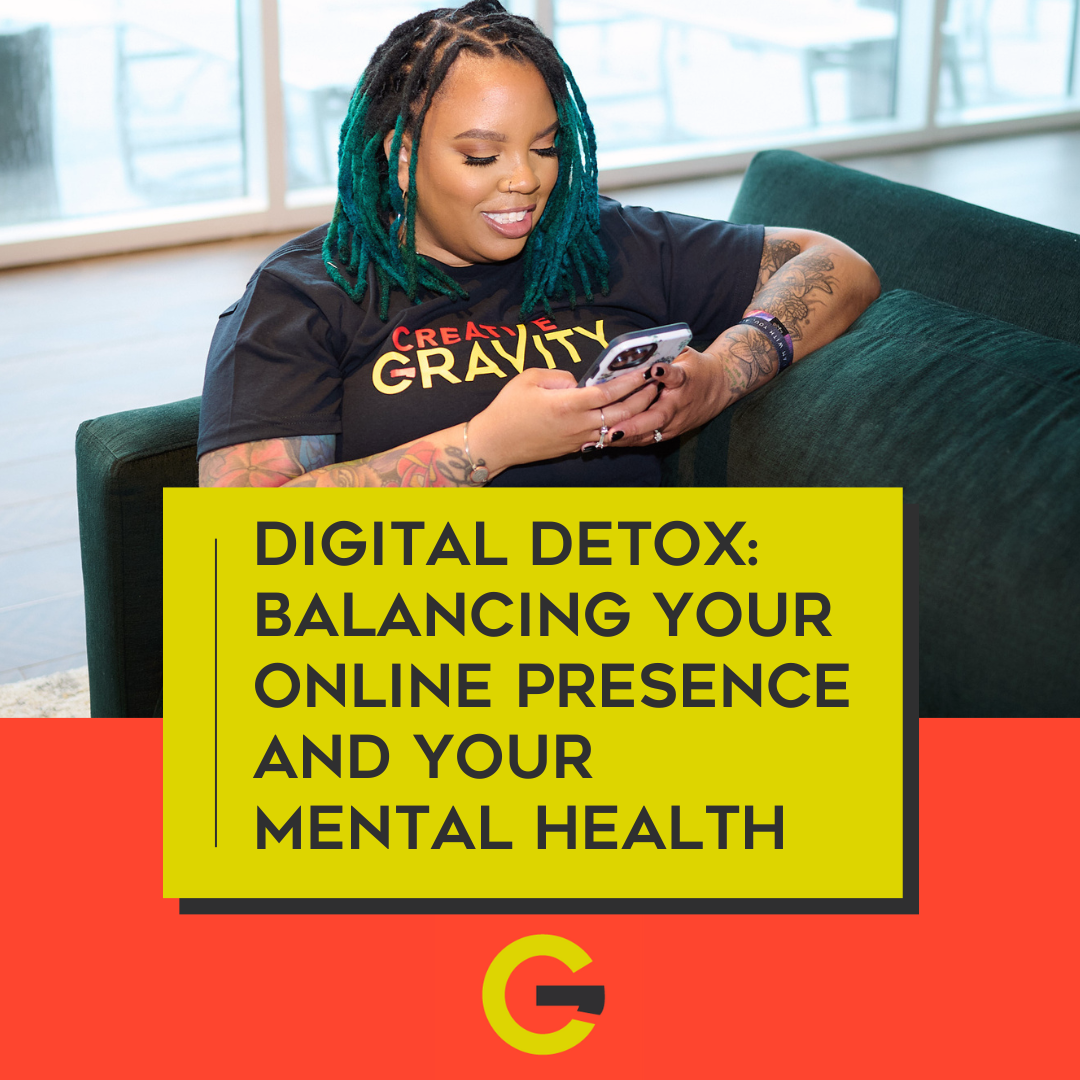In today’s world, an online presence isn’t just used for the occasional social connection anymore. Between social media being used as an integral piece of connection for many to businesses using it to increase sales and grow their brand , it’s no secret that our lives are increasingly wrapped up in the online space. Social media platforms, emails, and constant connectivity have become such major parts of our daily routines. While there are tons of benefits to this, it’s so important to strike a balance between our online presence and the need for a healthy offline life. One way to work towards this balance is with a digital detox. Without this balance, maintaining our mental health and overall well-being becomes a huge challenge.
The Digital Dilemma
With how common smartphones and social media platforms are anymore, they have really changed the way we communicate, work, and socialize. However, this constant connectivity comes with its challenges. Many people find themselves immersed in the digital world to the point where it negatively impacts their mental health. The pressure to maintain a flawless online image, the fear of missing out (FOMO), and the never ending notifications can contribute to stress, anxiety, and burnout. The constant scrolling and pinging of notifications can also lead to an addiction to the technology, which also begins to contribute to the anxiety, depression, and other mental health issues.
The Signs You Need a Digital Detox
Before understanding how to perform a digital detox and strategies for attaining a balanced digital life, it’s important we recognize the signs of needing to take a step back. Ask yourself: Are you constantly checking your phone? Do you feel anxious when away from social media for an extended period? Are you obsessed with portraying a perfect picture on your business’s social media account? Is your online presence affecting your real-life relationships? If you answered yes to any of these questions, it might be time to consider a digital detox.
Ways Towards a Digital Detox
Digital well-being goes way beyond simply limiting screen time. It involves fostering a healthy relationship with technology, allowing it to enhance our lives without becoming all-consuming. Here are some tips to help you strike that balance:
1. Set Boundaries
Establish clear boundaries for your online time. Designate specific times for checking emails and social media, and stick to them. I only allow myself to check my email 2 times a day, as the constant checking and notifications are way too overwhelming. Create a tech-free zone in your home, such as during meals or before bedtime, to make sure you have quality offline time.
2. Unplug Regularly
Consider scheduling regular digital detox days or weekends. While it can be difficult to completely disconnect when using social media for business, scheduling content ahead of time allows you to still stay consistent with your content while unplugging from your device. Disconnecting from screens allows your mind to recharge, reduces stress, and encourages you to engage in other offline fulfilling activities that you enjoy.
3. Audit Your Social Media
Review your social media accounts – both personal and business – and assess their impact on your well-being. Unfollow accounts that contribute to negative feelings or unrealistic expectations. While detoxing from the digital world often looks like taking time away from it, the experience you have while online is equally as important to striking the balance between your online presence and mental health. Cultivate a positive online environment that uplifts and inspires you.
4. Prioritize Real-life Connections
While online connections are valuable, don’t negate the importance of face-to-face interactions. Nurture your offline relationships, whether they be personal relationships or those related to business, and spend quality time with those in your life important to you. Engage in activities that bring joy outside the digital sphere and bring depth to your relationships that go further than a screen.
5. Mindful Technology Use
Practice mindful technology use by being intentional about the apps you engage with. Turn off non-essential notifications, declutter and organize your digital spaces, and be aware of the time you spend on different platforms. While spending time online is not inherently problematic, making sure you’re doing so while practicing mindfulness regarding the time is crucial.
6. Prioritize Self-Care
While spending more time offline, make time for self-care activities. Prioritize getting enough sleep, eating food that will give you energy, and engaging in regular physical movement. Also focus on activities that bring you rest and joy, whether that be reading a book, spending time in nature journaling, or other self-care activities.These all can help improve your overall well-being and reduce the negative effects of technology on your health.
Take a Step Towards Balance
Reaching a place of balance between your online presence and offline life is a journey that requires mindfulness and self-awareness, and honestly takes time. By prioritizing your digital well-being, you can begin to enjoy the benefits of technology while safeguarding your mental health. Remember, it’s not always about disconnecting entirely but, instead, about using technology in a way that enhances, rather than hinders. Embrace an online presence that aligns with your values, and enjoy what both the online and offline worlds have to offer.
Is focusing on social media marketing becoming overwhelming for you and your mental health? Maybe it’s time to outsource! Set up a FREE discovery call today and see how Creative Gravity can support you. You can also find more social media tips and tricks when you follow Creativity Gravity on Instagram.
